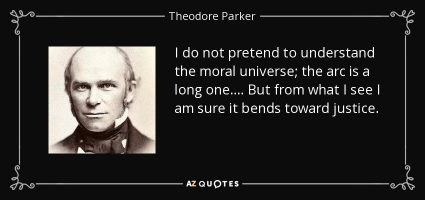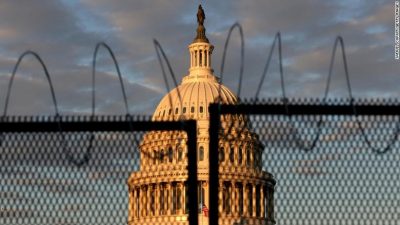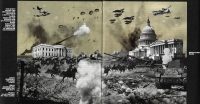
History textbooks are in the news. So is the history curriculum. The source of the news is not the federal Department of Education over some new regulation (remember Common Core?). It is not even from the state education departments. Instead it is from the state legislatures plus some Senators, Representatives, and talk-show hosts. The cause of the fuss is The New York Times 1619 Project and/or Critical race Theory.
I have written before about the deeply flawed 1619 Project is if you are actually interested in the history of 1619 (it’s not even in The New York Times magazine). But even though The 1619 Project contains scarcely any information at all about 1619, it remains important because of that title. The New York Times picked that title because of the message it delivers and not because of the content in the publication. That choice is a clue that what we are dealing with here are political/cultural messages delivered through memes and slogans in history. One should keep this realization in mind when deciphering the language of the public speakers on the subject. Regardless of what 1619 could mean in a purely academic context, that meaning is secondary to its meaning as a weapon in the Culture Wars. The same considerations apply to the once strictly academic jargon term “Critical Race Theory” that now is wielded and defend against as a weapon in that war.
WE FOUND THE TEXTBOOKS OF SENATORS WHO OPPOSE THE 1619 PROJECT AND SUDDENLY EVERYTHING MAKES SENSE
An article with this title was posted May 6, 2021, by Michael Harriot for The Root. Harriot had the ingenious idea of seeking to determine the history textbooks used by the 38 Republican Senators who sent a letter to the Secretary of Education expressing their opposition to The 1619 Project and Critical Race Theory being taught in the public school classrooms. He wanted to know that if history was being rewritten to conform to these teachings, “which version of history does the GOP fear is being altered?”
As part of his investigation, Harriot examined “state curriculum standards, yearbooks, and spoke with the teachers to see which interpretation of history the white tears-spewing politicians learned when they were in elementary and high school.” Readers of this blog will quickly grasp that the inclusion of “white tears-spewing” was not necessary to advance the reasoning of his analysis. It was necessary for the author to take this judgmental cheap shot at his target while being self-righteous. The technique is counter-productive as it alienates people who are not part of your sect. On the other hand, it feels good taking cheap shots at people so you do it. Think of our former President’s press conferences and tweets.
Returning to his serious research, Harriot identified six lessons learned from his investigation
1. There is no one Social Studies curriculum at the national or state level although there may be standards.
2. There are two histories taught by which Harriot means two cycles of social studies, one in elementary and middle school and a second in high school.
3. Sometimes there are three histories – Harriot is referring to the states that mandate a “state history” course generally with a state-approved textbook which may contradict what is taught in the American history classes.
4. Sometimes there are four histories if two state histories are taught, one at the elementary level and one at the secondary level.
5. World history adds another level. Different textbooks and publishers are used and what is taught in world history which can include the United States may differ from what is taught in the American history class.
6. No matter how histories there are, there is no Black History. By this, he means there may be cursory mention of the Civil War, Martin Luther King Jr., and the civil rights movement, but that is it.
These general observations seem reasonable and probably would not draw a second glance unless one was participating in the Culture Wars.
HISTORY TEXTBOOKS OF THE REPUBLICAN SENATORS
With this background, Harriot then turns to the textbooks of Republican Senators.
To our surprise. Most received a well-rounded education on the history of Black people in America.
Just kidding. They all learned variations of the same white lies. And, apparently, they’d like to keep it that way.
Once again, Harriot deploys the cheap shot which work well when preaching to the choir and is a turnoff when not. Even before presenting the evidence he has already condemned the results in derogatory terms. Clearly he is not interested in a dialog. Fair enough. It is his blog.
The Senators he reviews for their history textbooks are:
Marsha Blackburn (Tennessee) who attended school in Mississippi
Tom Cotton (Arkansas)
Ted Cruz (Texas)
Lindsey Graham (South Carolina)
John Kennedy (Louisiana)
Mitch McConnell (Kentucky)
Tim Scott (South Carolina)
Tommy Tuberville (Alabama).
One notes the Confederate location of these all-but-one white Senators. Harriot reports the obvious results. Yes, one should not be surprised to see the role of the United Daughters of the Confederacy in influencing the curriculum. Yes, masters were kindly. Yes, slaves were loyal to “ole Massa.” Yes, there was the War for Southern Independence. Yes, there is the Lost Cause. Yes, the Klan punished Negroes when the courts did not. Interestingly, the Indians of Georgia receive far more attention than did the Negroes of Georgia who only are mentioned five times.
There is no need to review each Senator one by one. The pattern is clear. Harriot ends by asking the reader to imagine what it would be like for a white person to have one’s entire education even through graduate school based on these teachings only to be confronted by The 1619 Project. He concludes by saying these Senators, and presumably all 38 who signed the letter to the Secretary of Education including those not from Confederate states, have all been educated in “critical racist theory this whole time” [bold added].
LESSONS TO BE LEARNED
There are lessons to be learned including with Harriot’s cheap shots. The idea of examining the history textbooks is an insightful one. His argument would be strengthened if he could include the other sources of learning to determine if they reinforce or contradict his textbook findings. Yes, I realize he wrote a blog and not a journal article or a monograph, but I would like to know more before attributing such power to the history textbooks in public schools. Here are three other sources of information that would have influenced the child.
1. Oral – what did the child learn from parents, grandparents, family and so forth about the history of the United States and especially the Confederacy?
2. Visual – what did the child see in the statues, monuments, memorials, street and building names?
3. Public – what parades, processions, battle-reenactments, and flags did the child see?
The odds are all these facets of education deliver the same message. The removal of a history textbook or even a change in one would not necessarily invalidate the message a child receives if the other components remained intact. Still it is worthwhile to examine the history textbooks of the current Senators. I also would be interested to know what the future Senators from the Confederacy are learning from the current history textbooks today.
Unfortunately the key lesson from this analysis is not being learned. History facts are a casualty in a Culture War. Did you ever try to win a religion discussion with facts? Besides, these days everyone is entitled to their own facts anyway.
The opposition to The 1619 Project and Critical Race Theory is based on the culture war in the present and not the history in the past. The academic meaning of Critical Race Theory is insignificant compared to the political/cultural message expressed by those who are wielding it was a weapon of war. When the Woke say The 1619 Project and Critical Race Theory, the Republican Senators, state legislators, the talk-show hosts and the voters poised to return Republicans to power in 2022 hear:
Your white ancestors were monsters.
The country you love was born in sin.
Your country’s success is due to systemic white racism.
You are the beneficiary of white privilege.
You owe us.
It is our turn now.
They hear these words because that is what the Woke are saying regardless of the technical meaning of the terms. While the country may not legally separate into the United States of America and the United States of Trump, it will or is separating culturally and politically. The New York Times 1619 Project and Critical Race Theory are simply examples of the drawing of the boundaries dividing country just as gerrymandering does.










